Epokale: Sweet Gewürztraminer for the Ages
The author visits Alto Adige to taste a novel wine aged for seven years in an ancient silver mine
On a single day each year, the staff at Cantina Tramin load 2,000 bottles of a golden elixir onto a truck and make a 100-kilometer journey north from Termeno, Italy, to Masseria, which Germanophones call Maiern, in the foothills of the Alps. The truck swaps pavement for dirt as it twists up Schneeberg Mountain through fields dotted with pine. After 3.5 kilometers, it eases into a gravel yard flanked by railroad scrap. Ahead is the concrete façade of the disused Monteneve mine. A sign above the rusty door declares this the entrance to the Poschhausstollen, the Poschhaus gallery.
The team dons miner’s hats, rubber boots, and raincoats, then transfers their cargo onto a diminutive yellow train. The conductor signals, the train jolts alert, and the contraption rumbles into the mountain’s black maw. The destination is a gallery 3 kilometers into the stone where they will age this new wine, a sweet Gewürztraminer named Epokale.
Water drips from walls that boom with the roar of wheels on steel. It is cold. The air is thin. After twenty minutes the train sputters to a stop and the crew dismounts, carrying their crates along the final stretch of murky tunnel. They load the new wine into plastic bins, gather up an older vintage, cart the cases back to the train, and reverse the journey home.
The mountain’s veins run gold.
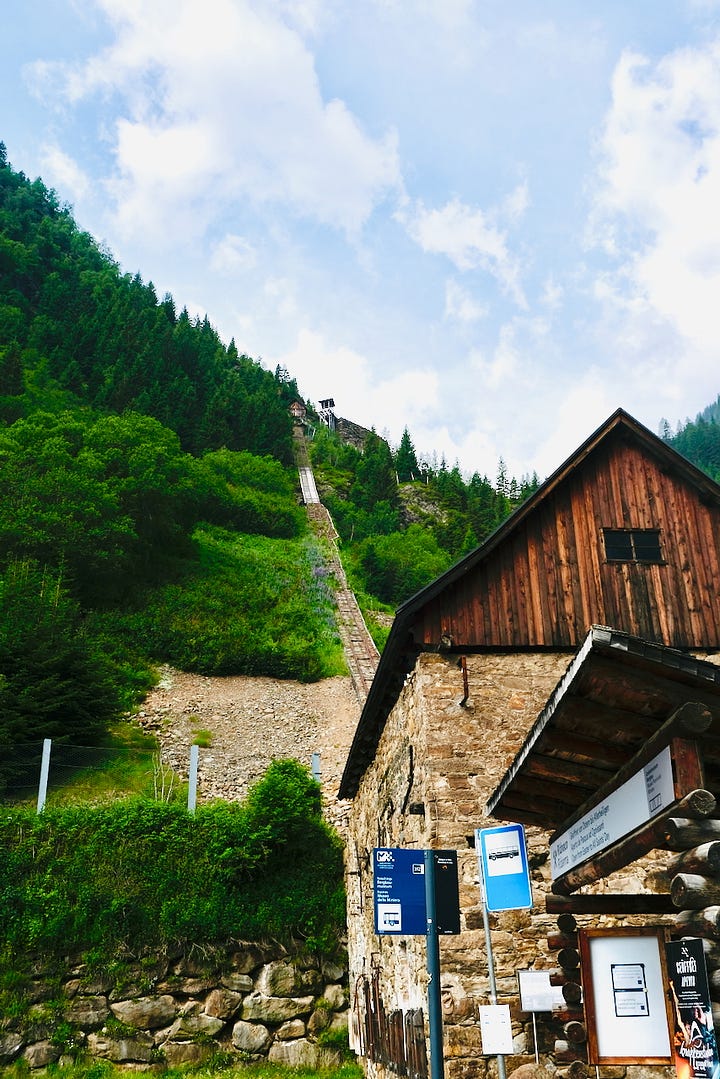

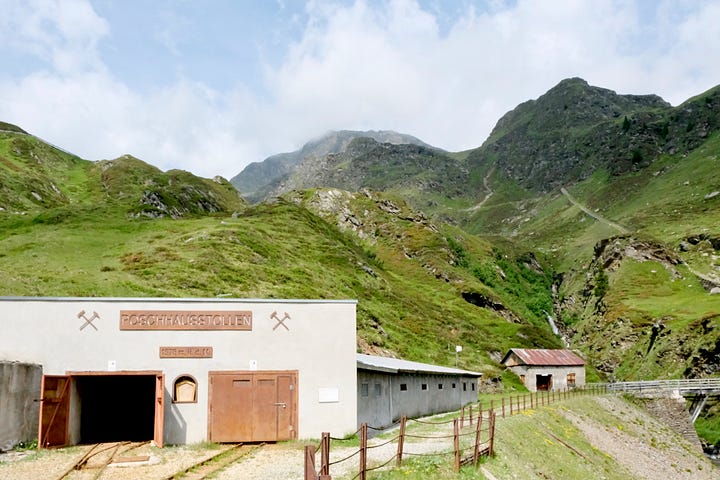
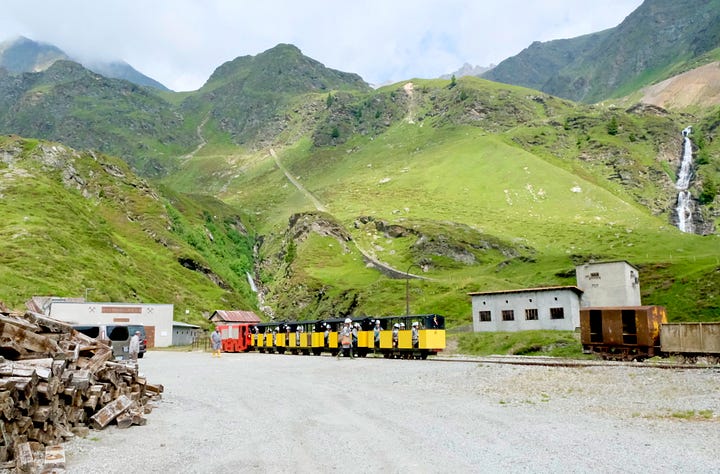
Every workday for 800 years, miners left their dwellings on the flank of this mountain, porting daily rations, tools, and lanterns to the shaft and greeting each other “Glück auf!” an incantation not merely for success but for survival. They descended the ladders into the galleries to spend their day on their bellies picking at the organs of stone, fingering rich veins of lead, silver, and zinc, and, later, cadmium.
The warmth of their breath wreathed their lanterns. Their leather boots were soon sodden, their woolen garments grew heavy with mud. Carts clattered past them ferreting raw ore toward fresh air and daylight, where it was loaded onto horse-drawn rail cars, or, in winter, human-driven sleds. It was shipped to processing factories in Austria which turned it into tools and trinkets for the masses and profits for the bosses.
The mountain’s veins run silver.
The Poschhaus entrance to the Monteneve mine opened in 1967. Before then, and for centuries, workers used an entrance near the miners’ village called St. Martin. During its heyday, in the 18th and 19th centuries, St. Martin was Europe’s highest elevation community, at 2,355 meters above sea level. Its population of one thousand lived in a mix of family homes and worker dormitories. There were also factory buildings and offices, an inn, a hospital, an elementary school, and a theater. There was a rifleman’s group and a community band.
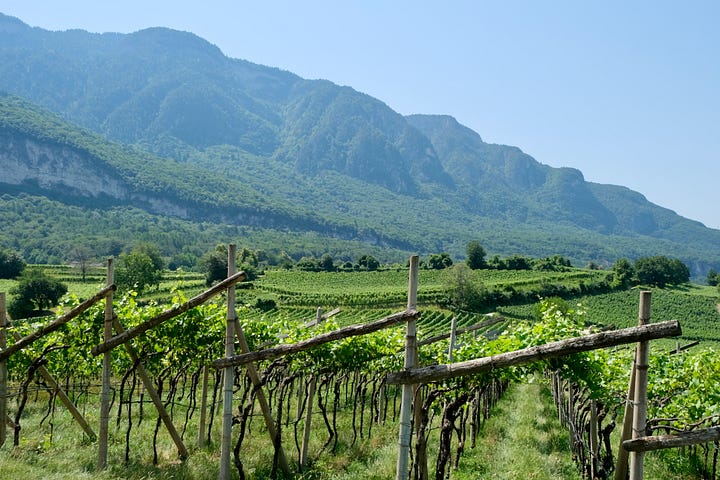
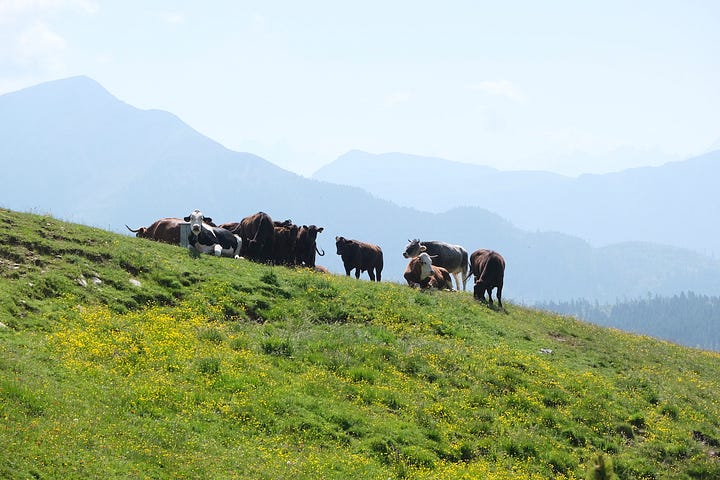
Life above the tree line wasn’t easy, especially in winter. But as the ore flowed north into Austria, along roads, and, later, rail lines, goods flowed back to the village to sustain it. Over centuries, the mine became mechanized and modernized, and after 1919, when the Italians took over from the Austro-Hungarians, the mine also became an ore processing site. In 1965, construction began on the Poschhaus tunnel and on a dorm for miners lower down the mountain in the town of Masseria.
The opening of the new tunnel coincided with a fire in St. Martin that destroyed a workers’ residence. St. Martin’s fate was sealed. The village is now a tourist site a mere 4 kilometers from the Austrian border, and the old inn has been turned into a hostel for vacationers seeking mountain air.
The mine itself didn’t endure much longer. By 1979 production had ceased, and by 1985 so had exploratory drilling. The complex is now part of the Ridanna Mining Museum, where for €3 a visitor can peer at yellowing artifacts, and for €30 can take their own train ride into the hill.
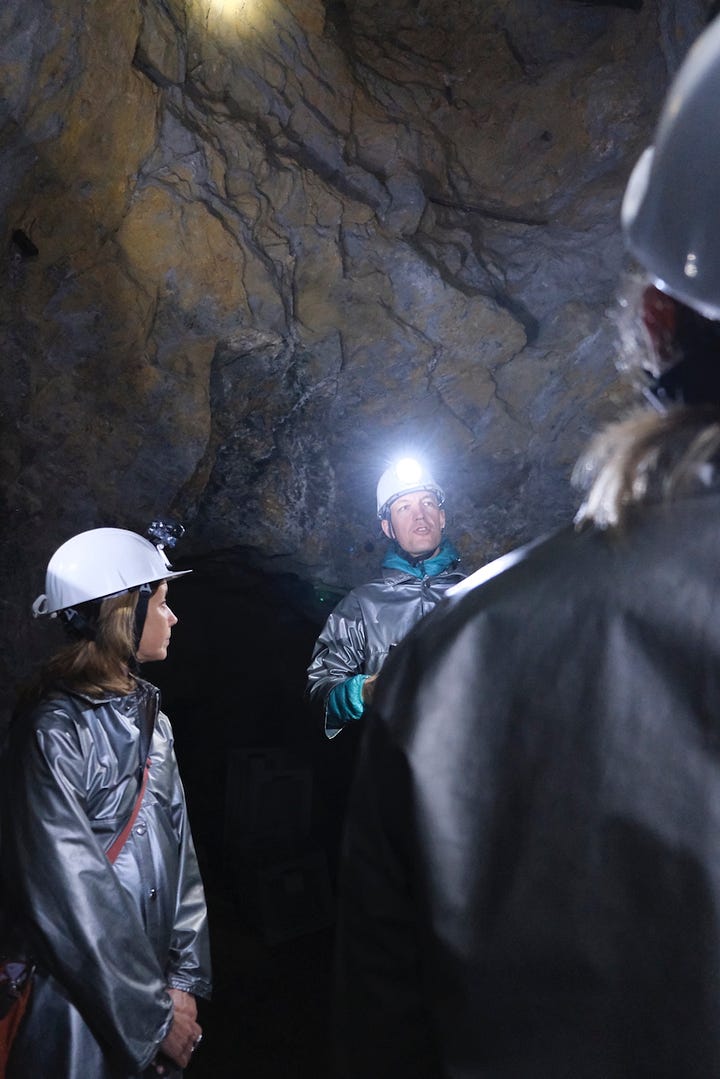

The conditions that rendered the mine onerous for workers render it perfect for aging wine. The temperature is a constant 11°C year round. The humidity is a constant 90%. It’s pitch black inside and there are no vibrations. There is less oxygen in the mine than outside, but the air pressure is the same, namely lower, at this Alpine elevation, so there’s less oxygen knocking on a cork’s door. In short, it is an utterly stable environment for wines that age a long time.
And Epokale ages a long time. The first vintage reposed in bottle for seven years before its release. Subsequent vintages aged from five to seven. Gewürztraminer Spätlese can take it.
Although today sweet Gewürztraminer is more closely associated with Alsace than Alto Adige, in the Middle Ages sweetness was chorus and verse. Wine has been grown in this region of the Alps for two millennia, historically white before shifting toward red. Cold winters meant wines didn’t always finish fermentations to dryness, and anyway sweetness was a luxury much prized. It wasn’t until the advent of technical winemaking, designer yeasts, and the international fashion for dry, crisp white wines that a dry style of Gewürz became popular.
Alto Adige traditionally had a mosaic of tiny vineyard plots. The families who farmed them were growers, not vintners, who sold their fruit to powerful regional wine producers—enjoying little clout in the exchange. The arrival of the railway in the late 19th century made it easier to ship finished wines, and growers, eager for greater control, banded into cooperatives, building shared wine production facilities and centralizing administration and distribution. The first co-ops formed in 1893, and currently Alto Adige has twelve, which, according to their professional association, support 3,200 family growers who produce 74% of the region’s wine.
Cantina Tramin is one such co-op. Formed in 1898, it now has 160 grower families farming 270 hectares of vine; two-thirds are white wine varieties. The co-op produces 1.9 million bottles per year. Twenty-one percent of all holdings, about 57 hectares, is Gewürztraminer, arguably Cantina Tramin’s heart and soul. The winery produces five Gewürz bottlings, two dry and three sweet. Notable among the dry wines is the Nussbaumer vineyard designate, which for two decades has earned Tre Bicchieri from Gambero Rosso.
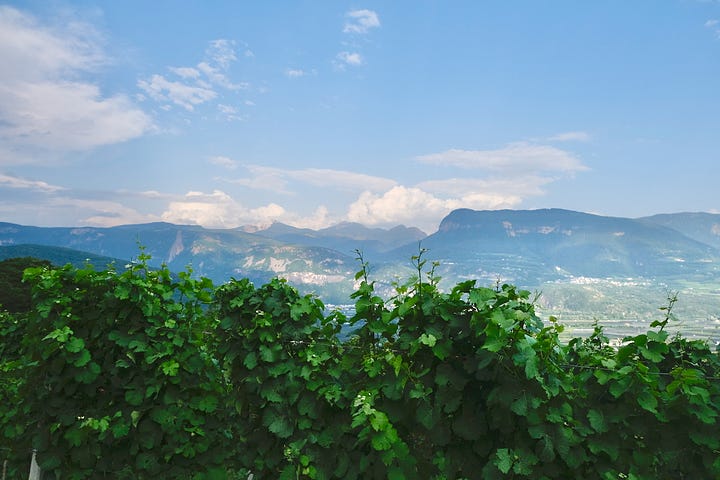

If dry Nussbaumer is the serene oldest sibling, Epokale is the flamboyant youngster. The wine and its name (pronounced eh-poh-KAH-lay) pay tribute to the region’s old Spätlese styles, “epochal,” suggesting a wine out of time. But it has been made only since 2009, a year the grapes were über ripe and concentrated, prompting the team to explore options for the best pick of the fruit. The grapes derive from two plots in Nussbaumer, on the slopes above Termeno. The site smiles south, and its Dolomitic limestone and clay soils retain heat overnight. But the mountain shadow stretches across the vines by late afternoon, further cooled by both downslope breezes along with air moving north from Lake Garda. In short, these are perfect conditions for Gewürztraminer, a cool climate grape with an appetite for sunshine.
Grapes for Epokale are harvested in late October when the sugar levels are high, the skins are thin, and the berries are highly perfumed. They’re pressed and vinified in stainless steel, the fermentation arrested by cooling to retain sugar. The wine spends eight months in small steel tanks on the lees before bottling. Alcohol by volume and residual sugar vary widely by vintage.
And about that élevage. No one at the winery can say precisely who came up with the idea of aging Epokale in the old Monteneve mine. Willi Stürz, the co-op’s technical director, knew the sweet wine should see several years in bottle but wanted to find an off-site location to spare space in the winery. It had to be cool and moist, but also high altitude to take advantage of lower air pressure. Permissions and paperwork notwithstanding, the mine, only an hour’s drive north, seemed like a perfect fit.
It also seemed like a gimmick. Wineries have, in the last decade, made headlines for aging wine underwater, both briny and fresh. SpaceX shot bottles of Petrus onto the International Space Station (someone later fetched it back). Research is ongoing about these alternative aging protocols; the results are not yet decisive.
I carried my skepticism about Epokale’s mine aging into a six-vintage vertical tasting at Cantina Tramin when I visited the mine and winery. But after tasting I decided the approach was more strategy than stunt.
The vertical event was guided by Stürz along with sales director Wolfgang Klotz, with color commentary by Italian wine journalist Alessandro Torcoli. It included a preview of the 2015 vintage plus all other vintages except 2014, which the winery held back for longer aging. (Winery employees had actually schlepped it all out of the mine, then schlepped it back in again.)
Stylistically the wines were kin: golden-hued and profusely aromatic, sweet with modest acidity. The longer-aged wines showed that over time, sweetness quietly yields the floor to a tertiary sense of nut and honey, dried apricot and spice. But organoleptically, and technically, they were a heterogeneous lot. The sweetness, acidity, and alcohol varied widely by vintage, as did overall countenance. During the tasting it was revealed that one vintage, the 2011, did not, in fact, age in the mine, for reasons not explicated. (Once you get a gimmick you should probably stick with it.) It did seem quieter, but given the diversity I could not unequivocally attribute that to more standard cellar aging.
Still, such variation suggested Stürz and team had been working in response to the fruit coming in the door rather than slavishly following some notional ideal. Take sugar, for example, which in the first edition clocked in at 107 g/L. In subsequent years this floated downward to as low as 23 g/L but then crept up again; the 2015 had 55 g/L.
The original intention was to make a wine that was sweet, but maybe not 100-grams sweet. “The beginning idea was the second and third wine,” Stürz said, referring to the 2010 and 2011. But they also realized sugar helped the wine. “After seven, eight years, we had the conviction that more extract and more residual sugar are better for the longest maturation.”
The 2015, the newest wine in the vertical, was made from fruit that came in highly concentrated, but, said Stürz, “The interesting thing is the high brightness. The harvest time was late, but the sugar content was not much higher.” And despite having just emerged from six years inside the mine, “2015 for me is very young, a little bit closed,” he said, “but I think has a long maturation time.”
One certainty about Epokale is that it’s delicious. Monica Larner, in her critical review of the inaugural 2009 vintage for The Wine Advocate, gave the wine 100 points, a first for any Italian white wine. That was in 2018. By then, the winery had already produced eight more vintages (and the 2009 was already sold out), so it cannot be said that the praise much altered their stylistic approach.
But recognition is sweet. With Epokale, Cantina Tramin successfully rebooted a style that fell out of favor two centuries ago. That’s a pride point not only for the co-op’s growers but for all the region’s families who’ve long labored to safeguard tradition, sustain their livelihoods, and grow along with the times.
Tasting Notes
Cantina Tramin Gewürztraminer Spätlese Epokale Alto Adige DOC
The 2016 vintage is currently available for about $190 (750ml).
2009: Rich gold color, the darkest of the samples. Wildly perfumed, suggesting jasmine and white flowers, with a heady thrum of caramel and honeyed peaches. The palate is opulent and sweet with stone fruit, dried apricot, spice, and nut, but lively acidity lightens the finish.
12.5% ABV | RS 107 g/L | TA 5.6 g/L
2010: Yellow golden with savory and slightly herbaceous aromas, flowers, and tree fruits with a light, mineral edge. The palate is expansive, with abundant ripe apricot nectar balanced by firm acidity. The finish is forever, with a closing lift of fresh herbs.
13.5% ABV | RS 36 g/L | TA 5.0 g/L
2011: Aged at the winery, not in the mine. Aromas are somewhat quiet with modest flowers and spice, and the palate suggests yellow apple and pear. Overall the wine shows less complexity and feels a bit shy.
14.2% ABV | RS 30 g/L | TA 5.0 g/L
2012: Highly perfumed with Tahitian vanilla, jasmine, and beach rose plus plenty of spicy Gewürztraminer character. The palate is a mélange of peach and pear steeped in herbs and flowers. The acidity sits more widely across the palate, refreshing and uplifting.
13.8% ABV | RS 23 g/L | TA 4.5 g/L
2013: A cooler vintage. The aromatics feel fresher, younger, giving a sense of orange peel and apple blossom. The palate is piquant, like spiced apple and white peach. Overall the wine feels soft but that spice kick is enlivening.
12.7 ABV | RS 46 g/L | TA 5.0 g/L
2015: It suggests Tahitian vanilla and Mandarin orange peel, with sweet softness accented with flavors of stone fruit and spice. Somewhat closed but likely to blossom.
12.5% ABV | RS 55 g/L | TA 5.1 g/L
All photos ©2025 Meg Maker. My visit was part of a media trip in June 2022 organized by Studio Cru. Wines were samples for review. A version of this article first appeared in TRINK magazine with the title Epokale: A New Gewürztraminer for the Ages.



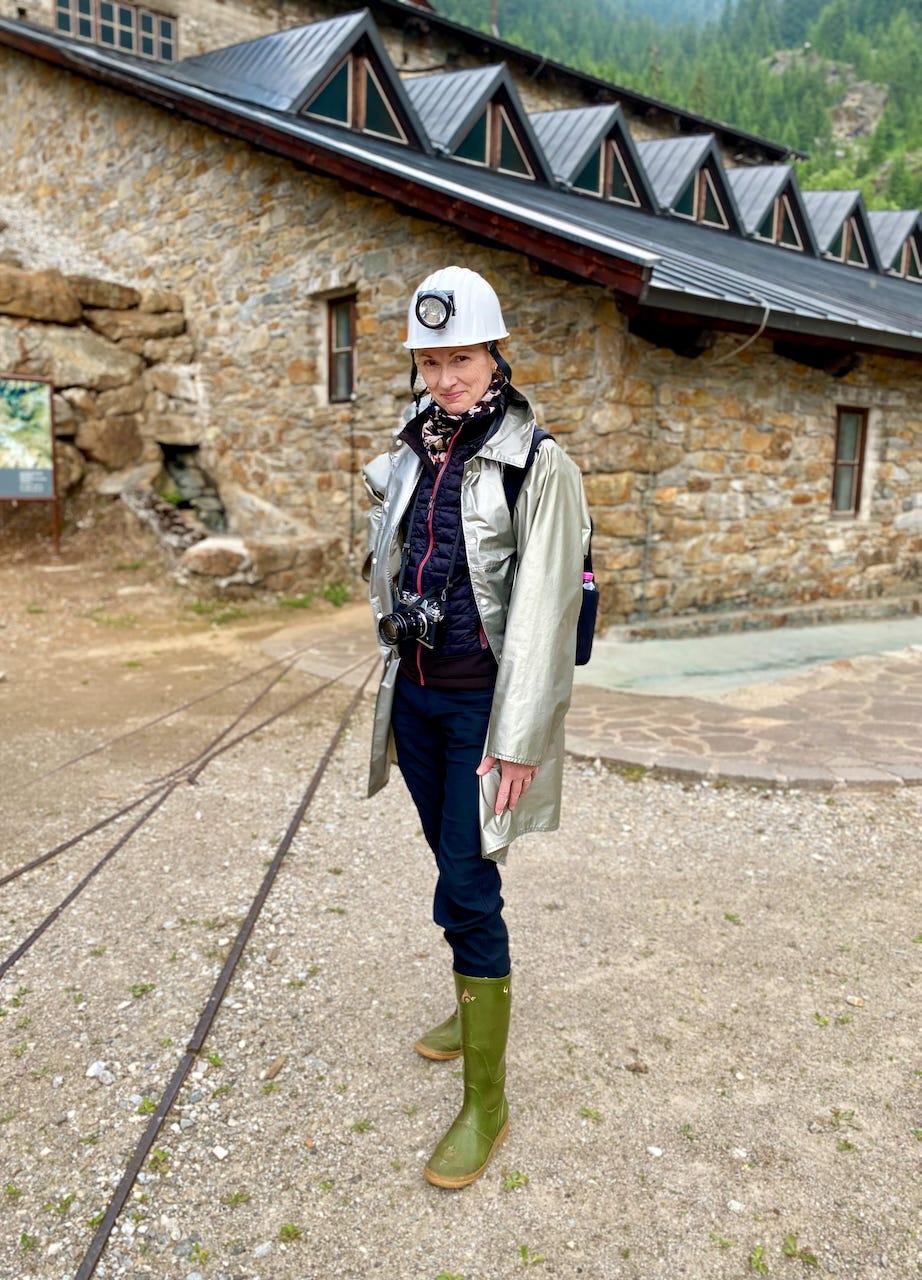
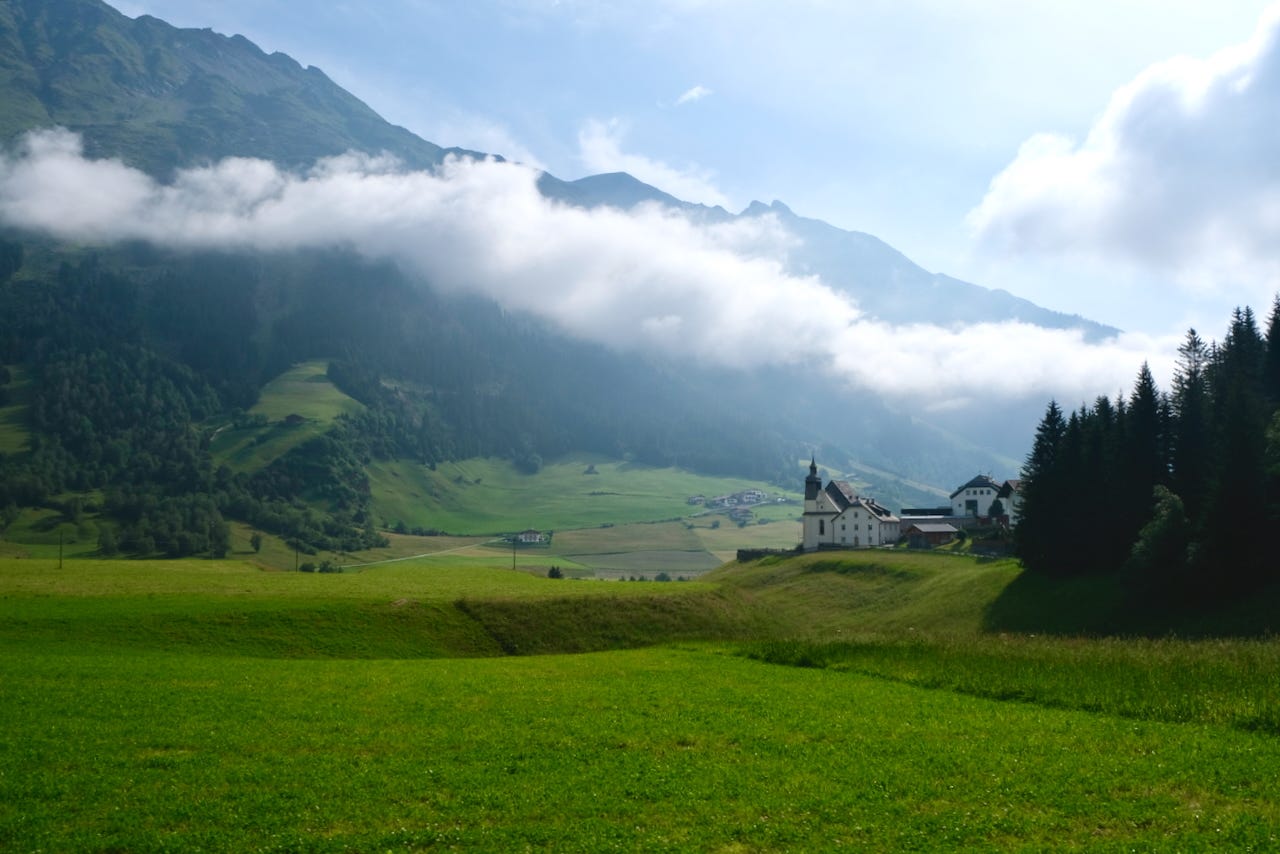
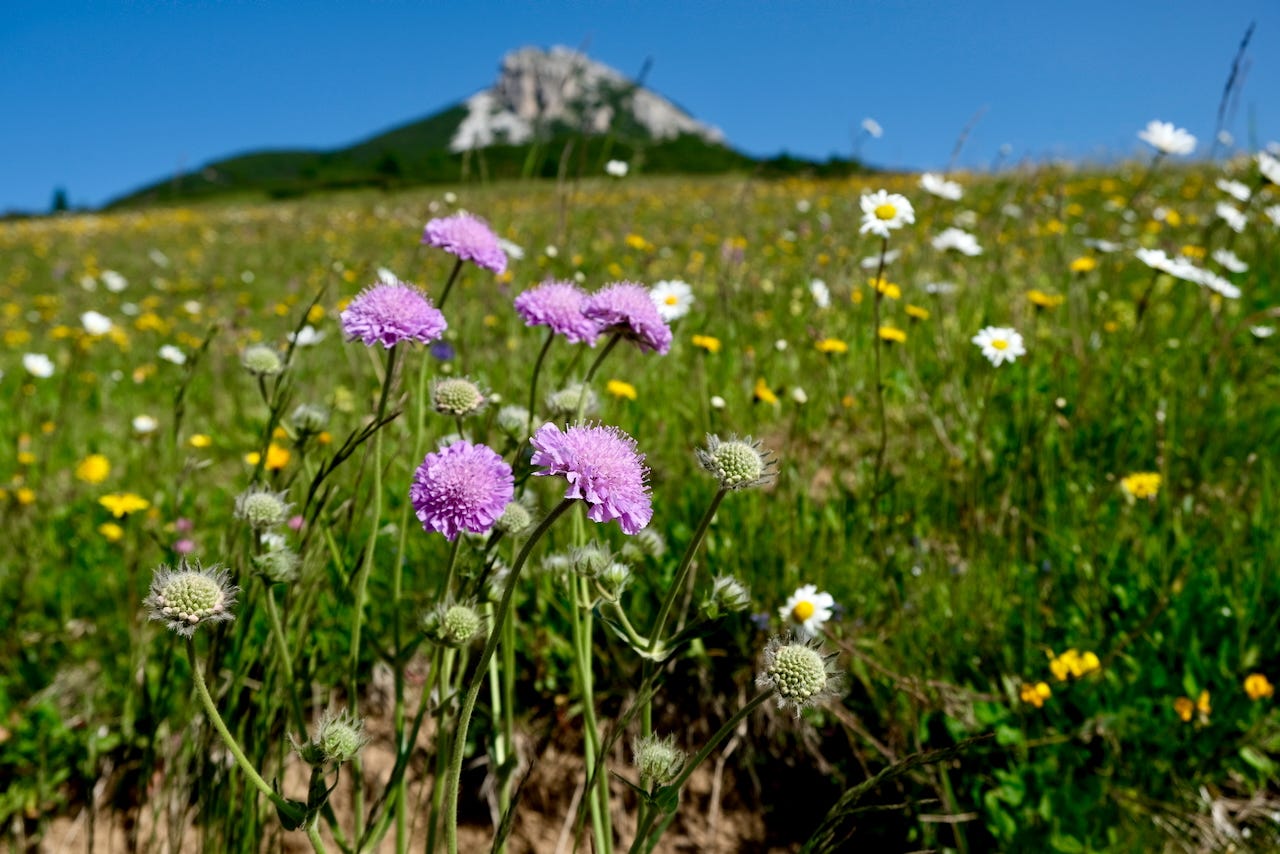
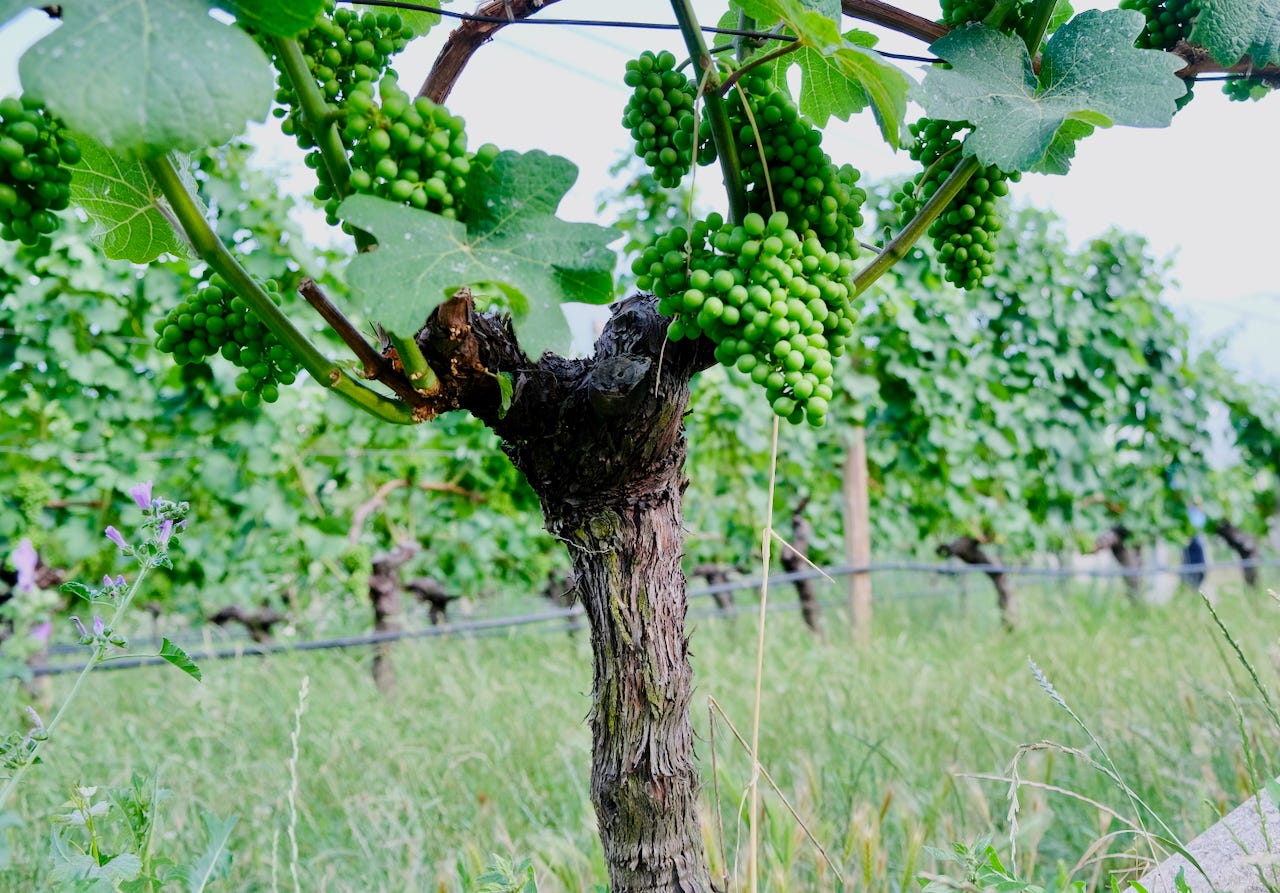


Always happy to read about Gewurztraminer!